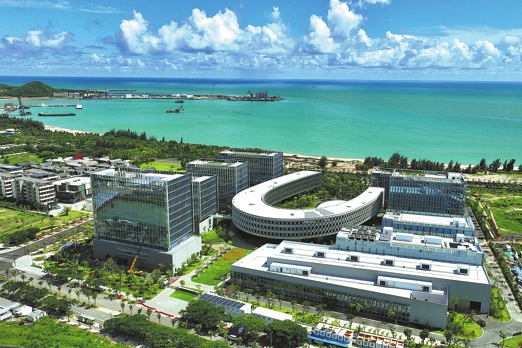Mangrove forests on the rise after years of restoration work

Mangrove coverage in China has returned to the level it was in the 1980s after years of restoration efforts, according to a research report on wetlands released by the Chinese Academy of Sciences.
This result was achieved as the overall degradation of wetlands in China slowed from 2015 to 2020, according to the research findings, which were released on Dec 27.
A National Forestry and Grassland Administration survey shows that China's mangrove forests now cover 27,100 hectares. The country is among the few worldwide that have seen their mangrove areas increase.
Bao Daming, deputy head of the administration's wetland management department, said at a news conference in November that mangroves in the coastal intertidal zone form unique ecosystems.
"These trees and shrubs purify seawater, prevent winds and waves, maintain biodiversity and store carbon. China's nature reserves are home to about 55 percent of its mangrove areas," Bao said.
According to the Special Action Plan for Mangrove Protection and Restoration (2020-2025), China will build and restore 18,800 hectares of mangrove forests by 2025.
Mangroves are important habitats for 341 threatened species globally, the National Forestry and Grassland Administration said.
For example, in Guangdong province, the Shenzhen Bay Area, which includes mangrove wetlands, is home to migratory birds and is a major transit point on the north-south migration route. Tens of thousands of such birds rest there as they journey between East Asia and Australasia every year, the administration said.
Liao Baowen, a mangrove expert at the Chinese Academy of Forestry, told People's Daily that in the past, experts and workers focused more on planting and restoring vegetation. But now, more attention needs to be paid to restoring the overall function of the mangrove ecosystem.
"For example, while planting trees, we should provide enough room for wildlife to rest, including tidal gullies, beaches and areas of shallow water," Liao was quoted as saying.
He added that no more than 60 percent of these areas should be filled with mangroves, leaving at least 40 percent of the space as habitats for birds and other creatures.
In November, at the 14th Meeting of the Conference of the Contracting Parties to the Ramsar Convention, China said it would promote international exchanges and cooperation to protect four migratory bird routes that pass through the country. It said it would also set up an international mangrove center in Shenzhen.
The National Forestry and Grassland Administration said this center will carry out training and technical exchanges, boost information sharing, and monitor and evaluate ecosystems. It will also provide services and assistance to all parties to the Ramsar Convention, especially developing countries.
Today's Top News
- US arms sales to Taiwan a dangerous gambit: Editorial flash
- Taiwan opposition lawmakers announce plan to impeach Lai Ching-te
- Boosting consumption will be key in 2026
- No one should remain silent accomplice of racism
- Hainan FTP opens fast lane
- Visa-free measures spur surge in visitors






























